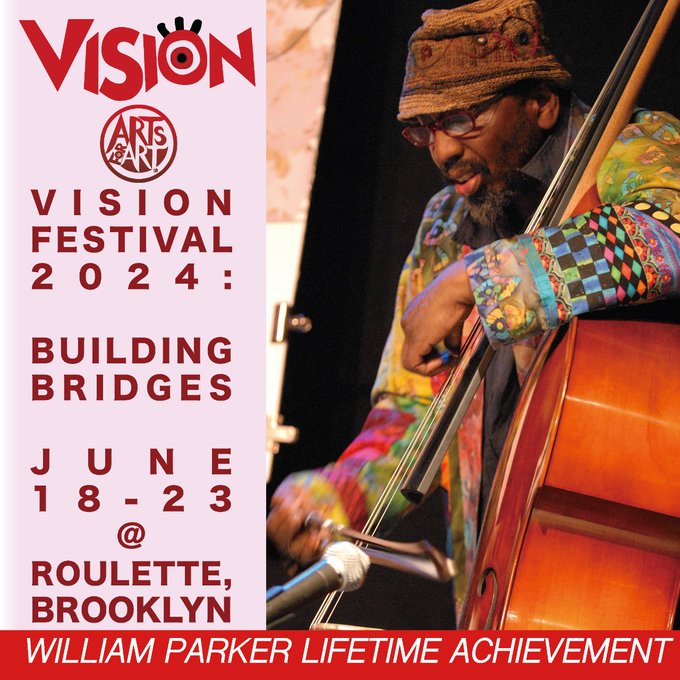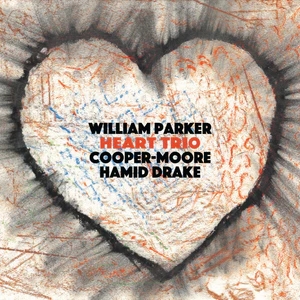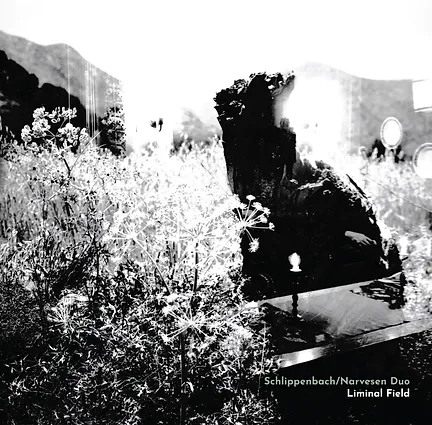
This year the Vision Festival in New York is celebrating the massive contribution that bass player, band leader and multi-instrumentalist William Parker has made to jazz by awarding him this year’s LifeTime Achievement Award. The Vision Festival is a longstanding festival that honours the tradition of free music in the USA that goes back to the recordings of Ornette Coleman in the late 1950s and early 1960s. William Parker is very the much leader of the group of New York based musicians who maintain that tradition, and he has been described as the ‘unofficial mayor of the New York improvisation scene’. He and his wife Patricia Nicholson, have run the Vision Festival since 1996, and this year’s opening night will be dedicated to the many groups and contexts that Parker has run or mentored. For the programme of this opening night, go to this link.
Coinciding with this tribute to Parker comes the release of two albums that show his versatility and the range of his activities. We mostly know Parker as a great bass player who played with Cecil Taylor for many years, and has led many influential groups since that time, e.g. his quartet with Rob Brown, Lewis Barnes and Hamid Drake, often performing or recording with guest vocalist Leena Conquest, or his Little Huey Creative Music Orchestra. However, on these two latest albums we hear Parker as a multi-instrumentalist and as a spoken word artist.

On Heart Trio (Aum Fidelity AUM118-2) Parker plays the doson ngoni, an African string instrument, the shakuhachi, Serbian and ney flutes and the bass dudek, an ancient double reed instrument; he does not play the bass. He is joined in the trio by two regular collaborators, Cooper-Moore who plays the ashimba, an 11-note xylophone made from discarded wood, and the hoe-handle harp, and Hamid Drake, who plays drums and percussion. I find this to be a totally charming album full of distinctive sounds from the various instruments and throughout a strong rhythmic pulse from Hamid Drake.
On the second album, Cereal Music (Aum Fidelity AUM 119-2) Parker does play some bass, also flute, but the focus is on spoken word, notably his poetry and observations from life all declaimed in Parker’s resonant voice. He is accompanied by Ellen Christi on vocals and sound effects. This is another charming album with the words enhanced by by the effects that Christi creates. I was particularly struck by Parker’s memories of having been born after six months and spending three months in an incubator.
William Parker’s music comes out of the tradition of free improvisation in the USA, but he often toured in Europe with saxophonist Peter Brötzmann, a key figure in the European approach to free improvisation. An excellent example of the continuing strength of the European free improvisation scene comes in an album, Liminal Field (Not Two Records MW991-2) featuring pianist Alexander von Schlippenbach, also a key figure in the development of the European free scene, and Norwegian drummer Dag Magnus Narvesen.

The album was recorded live in Stavanger, Norway, and has four tracks in which the duo build their improvisations loosely around various tunes. The first two tracks, Relay Extempore and Reveries in Monochrome, feature some beautiful interaction between the two players, with Narvesen’s drumming seeming to develop its own varied and distinctive patterns that nonetheless complement Schlippenbach’s playing perfectly. Likewise, Schlippenbach develops his own independent lines on the piano; the playing is an excellent example of what John Corbett (2016) has described as skiing down the slope in parallel, but arriving at the same place.
Track 3, Morphing Monk, features Schlippenbach improvising in and out of various Monk tunes, with Narvesen again providing the perfect reactions to Schlippenbach’s lines. The final track, Brass Tacks, begins dramatically with Narvesen’s drums and features a fine drum interlude before returning to the to and fro interaction between piano and drums.
It is a brilliant album!